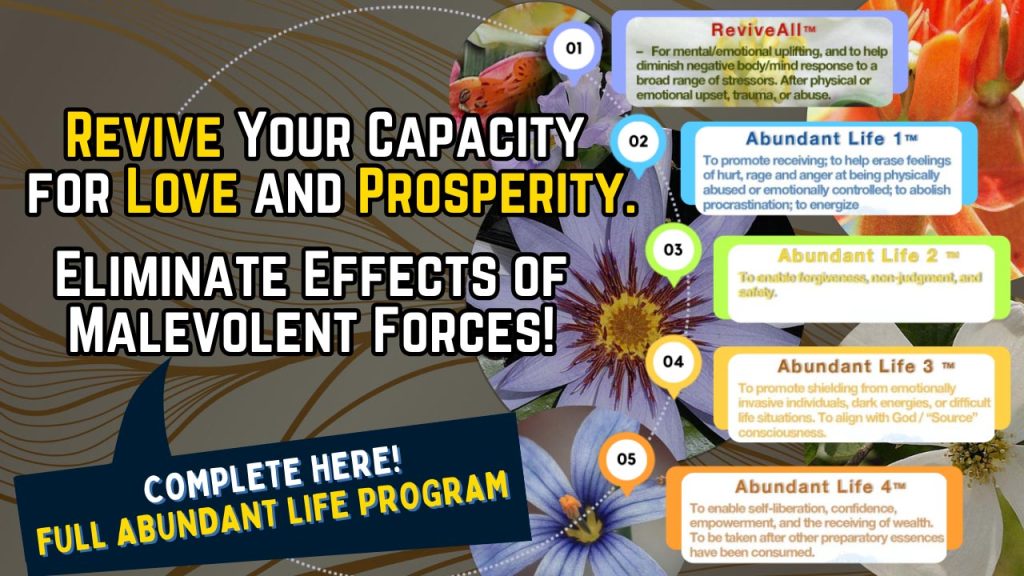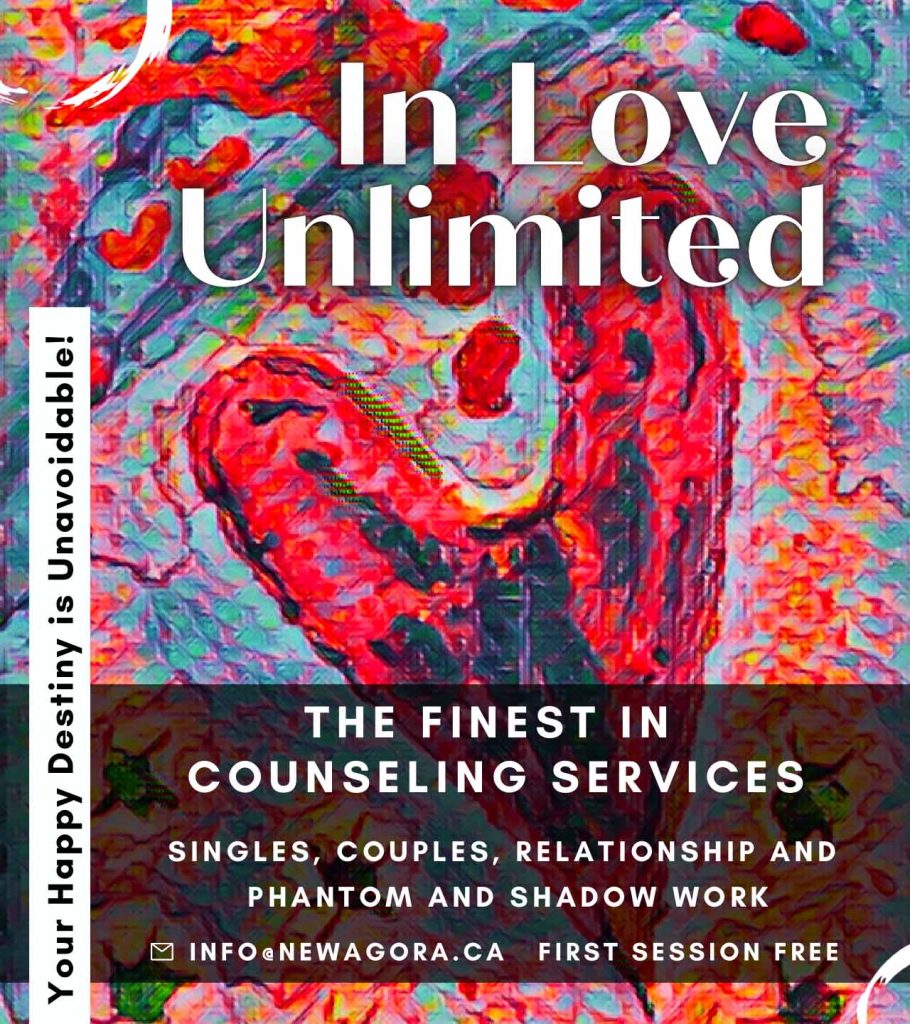Pair Bonding: An Evolutionary Perspective on Intimacy
By Paul David, Ph.D.
Copyright © 2020 Paul David, Ph.D.
pauldavidphd.com
One of the most basic needs we have as humans is to bond to one another. Both as children and as adults, we seek out and need to attach to other humans as an integral part of our development, functioning, and survival (Mikulincer & Shaver, 2007). While our need for bonding is ubiquitous, the manner in which it takes place varies greatly—particularly among adults.
In the animal kingdom, there are two primary types of pair bonding: life-long and serial monogamy (Sefcek, Brumbach, Vasquez, & Miller, 2008). I first discuss these different types of pair bonds and the influence of biological evolution in shaping them in both animal and human behavior. I then discuss the social evolution of monogamy among humans and the implications that its evolution has for intimate relationships.
Types of Pair Bonding
Mating behavior is one of the major dimensions of the bonding process among adults. When this association becomes dyadic and enduring, it is referred in evolutionary psychology as pair bonding (Buss, 1995). At one time or another, the vast majority of men and women across all cultures form pair bonds with each other. In fact, pair bonding is one of the hallmarks of the human species (Tsapelas, Fisher, & Aron, 2010).
In life-long monogamy, two partners form a pair bond that continues throughout their lifespan. In contrast, serial monogamy involves partners forming a series of shorter term pair bonds lasting long enough to raise the resulting offspring. As Fisher contends (2004), serial monogamy is probably an evolutionary adaptation to keep males close to home so they can offer needed protection and resources to their female partner and vulnerable offspring.
Contrary to popular precepts, non-monagmous forms of marriage are permitted in 84% of human societies; but in the vast majority of these cultures, only 5-10% of the population (mostly men) have multiple partners at one time (Frayser, 1985). Furthermore, monogamy is clearly the exception for non-human mammals; it only takes place in about 3% of all species (Kleiman, 1997). However, monogamy—particularly serial monogamy—among birds is quite typical occurring in 90% of their species.
Regardless of species, monogamy tends to arise most often when food is scarce and predators are common. In such environments, care by both parents is necessary to provide enough food and protection for the developing offspring. The need for biparental care in birds is accentuated by the typically helpess and vulnerable state of their newborn. In contrast, many mammals are born able to walk, whereas most birds must mature in the nest before they can feed themselves and escape from predators (Sefcek, Brumbach, Vasquez, & Miller, 2008).
Other factors influence the higher rate of monogamy among birds compared to mammals. Female mammals must lactate to feed their young and during this time they are usually infertile and unable to produce new offspring. Under these conditions, in order to increase their chances of reproductive success, male mammals are more likely to seek out other fertile females. However, since birds do not lactate, both parents are more likely to remain together to care for their young (Sefcek, Brumbach, Vasquez, & Miller, 2008).
Although monogamy is rare among animals in general and rare among mammals in particular, polygamy is quite common. Polygamy—when an individual of one sex mates with other individuals of the opposite sex—comes in two forms: polygyny and polyandry. Polygyny occurs when one male mates or forms a sexual relationship with more than one female concurrently. Typically, these males offer little parental investment beyond defending offspring from predators and sexual rivals. In the animal kingdom, polygyny is the norm in that it occurs in about 90% of species and in 97% of mammals (Kleiman, 1977).
Polyandry is the female version of polygamy; that is, when one female mates or forms a sexual relationship with more than one male concurrently. This mating pattern is relatively rare; it occurs in only a few known species of birds, sea horses, and human cultures in Nepal, Tibet, Sri Lanka, and India. Polyandry typically takes place when food is scarce, predators are dangerous, and the there are fewer viable females in the environment relative to males (Dixson, 1998). In these environments, raising offspring requires collaborative investment by several males—often brothers or other close kin.
Another mating pattern is polygynandry. This system involves an alpha male occupying a territory that overlaps with the foraging territories of several females, as is the case with chimpanzees. Often referred to as a tournament system (Sapolsky, 2002), there is a status hierarchy where the dominant male monopolizes most of the mating opportunities. In tournament species, less dominant males are sometimes able to find opportunities to copulate and produce offspring. As a result, paternity is confused and maternal care of the young is the predominate pattern in this system (Gagneux, Gonder, Goldberg, & Morin, 2001).
Evolution of Monogamy
Over the course of evolution each type of mating pattern has been linked to different degrees of sexual dimorphism—particularly in regard to morphology and display characteristics (Baker & Bellis, 1995). For example, monogamy is characterized by relatively minimal differences between the sexes in body size and ornamentation, whereas the other types are associated with distinct differences between the sexes in body size and ornamentation. The paleontological record of these different morphologies and display characteristics suggests that monogamy evolved around 10-20 thousand years ago with the advent of agriculture. The shift from hunter-gather to agricultural forms of subsistence likely allowed for more enduring bonds to take place to insure enhanced offspring survival and preservation of kinship networks (Dunpanloup, Pereira, Bertorelle, Calafell, Prata, Amorim, & Barbujani, 2003).
The paleontological record of these different morphologies and display characteristics suggests polygamy evolved from polygynandry several million years ago as homo erectus formed into hunting and gathering groups in which both sexes had increased regular access to one
another (Ryan & Jetha, 2010). In addition, monogamy likely evolved from polygamy around 10- 15 thousand years ago with the advent of agriculture. The shift from hunter-gather to agricultural forms of subsistence likely allowed for more enduring bonds to take place to insure enhanced offspring survival and preservation of kinship networks (Dunpanloup, Pereira, Bertorelle, Calafell, Prata, Amorim, & Barbujani, 2003).
After the advent of agriculture, societal forces gradually supplanted biological ones in shaping the practice of monogamy in human populations. More specifically, as human populations grew, and as social and economic organization among humans became more complex, cultural forces gradually institutionalized monogamous marriage. Because this form of pair bonding was more orderly and stable, it became more of the norm and was increasingly enforced
by various religious and political institutions across the globe. The initial function of these norms, most often codified in laws, was to define lineage and to specify how authority and wealth should be transferred among heirs (Coontz, 2005).
With the emergence of the Enlightenment in the 18th century, further shifts took place in how humans viewed monogamous marriage. Ideas from the Enlightenment advanced cultural norms about individualism and romanticism that gave credence to an emerging belief in Western societies that life was about the pursuit of happiness. These norms eventually became pervasive and marrying for love, rather than for wealth or status, became more commonplace (Coontz, 2005). This transformation was far reaching because it introduced the element of mutuality as a central component of human pair bonding. Since love cannot be forced, and to some extent depends on mutual choice, it set the stage for a new sense of equality between the sexes (Rifkin, 2009).
This trend toward parity was augmented by the Industrial Revolution and the growth of the middle class in the 19th century—enabling young people to select their own mates and pay for their own weddings, regardless of parental approval. In addition, as the women’s rights movement gained strength in the 20th century, legal systems in Western societies began recognizing wives as equals rather than as property. By the beginning of the 21st century, monogamous marriage had evolved to become primarily a personal contract between two presumed equals seeking love and happiness (Giddens, 1992).
The cultural evolution toward monogamy was also driven by the greater equilibrium it tended to produce in social organization. As researchers Henrich, Boyd, and Richardson (2012) found in their study of marriage, other forms of mating tended to lead to more intra-sexual competition that resulted in greater levels of crime, violence, poverty and gender inequality than in societies that institutionalized monogamous marriage. These researchers pointed out that monogamy leads to far more balanced pairing of the sexes—which, for most societies, reduced the number of young males competing for females and scarce resources. By shifting male efforts from seeking sexual partners to more parental investment and family support, these researchers found that institutionalized monogamy tended to be associated with increased economic productivity and child welfare.
Human Intimacy
As human pair bonding evolved, new possibilities for intimacy beyond sexual satisfaction emerged. For the first time in human history, humans could also meet their the needs for romance, friendship, and attachment in intimate relationships (Fisher, 2009). Romance entails the need for infatuation and idealization in relationships (Love, 2001); friendship involves the need for mutual acceptance and regard in relationships (Schnarch, 2009); and attachment concerns the need for a secure bond in relationships (Mikulincer & Shaver, 2007). Of course, all of these needs have been an integral part of the biological and social experience of humans for thousands of years. What has changed is that human pair bonding has evolved, particularly in Western societies, to provide for the satisfaction of all of these needs. Based on this evolutionary change, one definition of healthy intimacy might be the degree to which humans are able to satisfy all of these needs in a pair bonding relationship. However, as already discussed, different types of pair bonding provide varying capacities for the satisfaction of these needs.
The major strength of exclusive monogamy is that it provides for long-term security and stability. Because of its durability, human societies have institutionalized it in the form of marriage as the preferred framework for long-term mating and child rearing. However, because
exclusive monogamy limits sexual and romantic involvements to one lifetime partner, the major disadvantages of this bond are the incompatibility and infidelity that partners frequently experience among one another. To accommodate, most modern societies permit marital dissolution and/or tolerate extradyadic involvements. The result is that most of these societies practice a kind of de facto serial monogamy where most adults form a number of pair bonds with a series of mates over their lifetimes (Buss & Schmitt, 1993; Buss, 2005).
In Western societies, serial monogamy has become the most prevalent form of pair bonding (Fisher, 2004). Because sex and romance are emphasized at the expense of friendship and attachment, there is a low degree of secure intimacy in these societies (Schnarch, 2009).Ironically, in these cultures there is the tendency to pursue sex and romance as a way of establishing friendship and greater attachment security, but friendship and attachment security cannot be attained solely through these means. Instead, they are most often achieved through enduring lifelong friendship where sex and romance become incorporated as part of intimacy as well (Love, 2001).
Again, for intimacy to be optimal, all four dimensions—sex, romance, friendship, and attachment—need to be incorporated into human pair bonding. That is why alternatives like polyamory are going to have limited viability. In an effort to do away with exclusivity, partners in this alternative reserve the right to have multiple sexual relationships with the proviso that they also have full knowledge of their partners’ other intimate involvements (Davidson, 2002). By doing away with exclusivity, this alternative seeks to minimize the problems of dishonesty and boredom that so often arise in monogamy (Pines & Aronsen, 1981). However, while minimizing some of these problems, polyamorous couples are often confronted with other major difficulties in the form of the possessiveness and jealously that typically arise in the pursuit of extradyatic relationships (DeSilva, 1997; Echlin, 2003).
The reality is that all forms of mating favor some aspects of intimacy at the expense of others. The challenge is being able to form relationships that enable an integrated balance of sex, romance, friendship, and attachment. While exclusive monogamy certainly favors the human need for long-term attachment, this form of bonding also provides the most possibilities for integrating mature sex, romance, and friendship in intimate relationships (Schnarch, 2009). As the more primary form of bonding, attachment provides the essential structure through which all of these other needs can be met over the course of an intimate relationship (Mikulincer & Shaver, 2007). Putting it another way, without the attachment security and continuity involved in exclusive monogamy, humans are limited in the extent to which they can integrate and sustain healthy sex, romance, and friendship in their intimate relationships. For better or worse, this appears to be our evolutionary fate as humans.
References
Baker, R. R., & Bellis, M. A. (1995). Human sperm competition: Copulation, masturbation and infidelity. London: Chapman and Hall.
Buss, D. (Ed.). (2005). Handbook of evolutionary psychology. Hoboken, NJ: Wiley.
Buss, D., & Schmitt, D. (1993). Sexual strategies theory: An evolutionary perspective on human mating. Psychological Review, 100(2), 204-232.
Coontz, S. (2005). A history of marriage. New York, NY: Penguin.
Davidson, J. (2002). Working with polygamous clients in clinical settings. The Electronic Journal of Human Sexuality, 5, April 16.
DeSilva, P. (1997). Jealousy in couple relationships. Behavior Research and Therapy, 35(11), 973-985.
Dixson, A. (1998). Primate sexuality: Comparative studies of the prosimians, monkeys, apes, and human beings. New York: NY: Oxford University Press.
Dunpanloup, I., Pereira, L., Bertorelle, G., Calafell, F., Prata, M., Amorim, A., & Barbujani, G. (2003). A recent shift from polygyny to monogamy in humans. Journal of Molecular Evolution, 57(1), 85-97.
Echlin, H. (November 13, 2003). When two just won’t do. The Guardian, pp. 2-3.
Fisher, H. (1987). The four year itch. Natural History, 10, 22-29.
Fisher, H. (2004). Why we love: The nature and chemistry of romantic love. New York, NY:
Henry Holt & Co.
Frayser, S. (1985). Varieties of sexual experience: An anthropological perspective of human sexuality. New Haven, CT: HRAF Press.
Gagneux, P., Gonder, M. K., Goldberg, T. L., & Morin, P. A. (2001). Gene flow in wild chimpanzee populations: What genetic data tell us about chimpanzee movement over space and time. Proceedings of the Royal Society of London, Series B, 356.
Giddens, A. (1992). The transformation of intimacy: Sexuality, love, and eroticism in modern societies. Cambridge, UK: Polity Press.
Henrich, J., Boyd, R., & Richardson, P. (2012). The puzzle of monogamous marriage. The
Philosophical Transactions of the Royal Society, 367(1589), 657-669.
Kleiman, D. G. (1977). Monogamy in mammals. Quarterly Review of Biology. 52, 39-69. Lewis, T., Amini, F., & Lannon, R. (2001). A general theory of love. New York, NY: Vintage
Books.
Lockhard, J., & Adams, R. (1991). Human serial polygyny: Demographic, reproductive, marital, and divorce data. Ethnology and Sociobiology, 2, 177-186.
Love, P. (2001). The truth about love. New York, NY: Fireside.
Mikulincer, M., & Shavor, P. (2007). Attachment in adulthood: Structure, dynamics, and change.
New York, NY: Guilford Press.
Pines, A., & Aronsen, P. (1981). Polyfidelity: An alternative lifestyle without jealousy?,
Alternative Lifestyles, 4(3), 373-392.
Rifkin, J. (2009). The empathic civilization. New York, NY: Penguin.
Ryan, C., Jetha, C. (2010). Sex at dawn. New York, NY: HarperPerennial.
Sapolsky, R. (2002). A primate’s memoir. New York, NY: Touchstone.
Schmitt, D. P. (2005). Fundamentals of human mating strategies. In D. M. Buss (ed.), Handbook of evolutionary psychology (pp. 258-291). Hoboken, NJ: John Wiley & Sons.
Sefcek, J., Brumback, B., Vasquez, G., & Miller, G. (2008). The evolutionary psychology of human choice. Journal of Psychology & Human Sexuality, 18(203), 125-182.
Schnarch, D. (2009). Intimacy and desire. New York, NY: Beaufort Books.
Tsapelas, I., Fisher, H., Aron, A. (2010). Infidelity: When, where, why. In W. R. Cupach and B.
H. Spitzberg (eds.), The dark side of close relationships II (pp. 175-196). New York, NY: Routledge.
Copyright © 2020 Paul David, Ph.D.
Paul David, Ph.D., LMHC, LMFT
As both a licensed mental health counselor and marriage and family therapist, my practice includes conducting individual, couple, and family therapy for clients experiencing a wide range of psychological and relationship difficulties. However, I specialize in couple therapy–helping couples improve their intimacy and better manage their conflict. In working with couples, I have expertise in the areas of infidelity, substance abuse, and the lack of intimacy. In addition to my work with clients, as a Washington State and American Association for Marriage & Family Therapy (AAMFT) Approved Supervisor, I provide supervision to other clinicians. I also serve as a mental health evaluator for immigrant families seeking hardship waivers through the U.S. Citizenship and Immigration Service.
TOP IMAGE: PIXABAY
Come Follow Us on Twitter – Come Like Us on Facebook
Check us out on Instagram – And Sign Up for our Newsletter


















